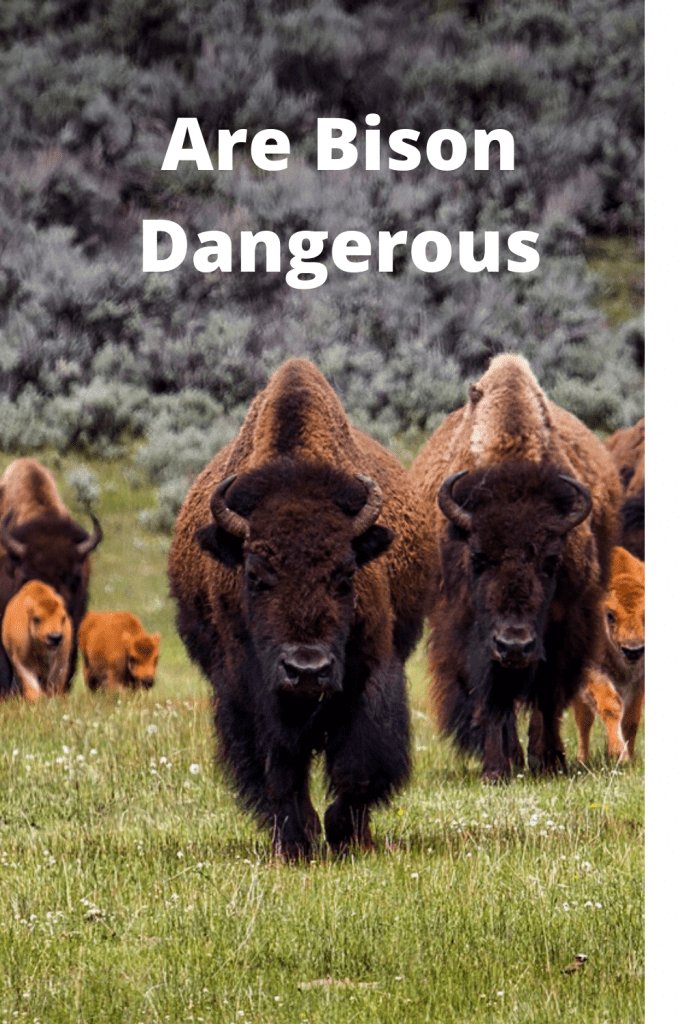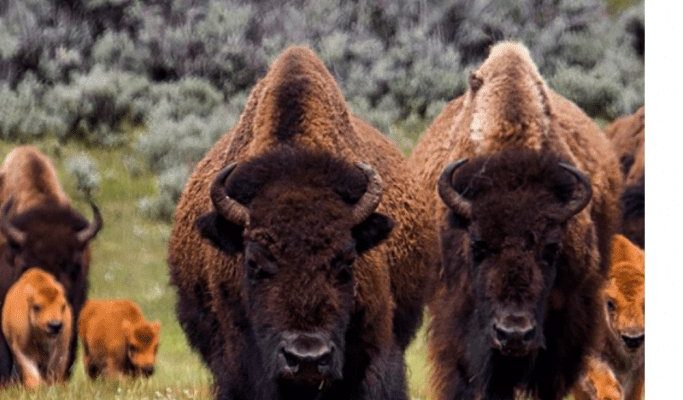
Picture your last visit to a national park. You may have marveled at the beauty around you and watched wildlife from a safe distance. But now, imagine coming face-to-face with a bison. They can weigh up to 2,000 pounds and stand tall at over six feet. That’s like trying to interact with a small car! Here’s the thing: while they can look docile, bison are wild animals. Understanding their behavior and the potential risks they pose is critical for anyone looking to enjoy nature responsibly.
The Size and Strength of Bison
When you see a bison, the first thing that hits you is its incredible size. Adult bison can be quite massive, weighing anywhere from 1,000 to 2,200 pounds. Their muscles are built for power, making them strong enough to defend themselves against predators. Imagine lifting weights at the gym; now multiply that strength by ten! They’re not just big; they’re athletes in the animal kingdom.
But size alone doesn’t make an animal dangerous. It’s how they react to perceived threats. Bison are not naturally aggressive, but they can become defensive if they feel threatened. If a bison senses danger—especially if it’s a mother protecting her calf—you might witness a display of power: charging, snorting, and even kicking. This is an important reason why understanding their behavior is key to staying safe around them.
You might be wondering, “Why would a bison charge?” It’s all about instinct. Bison are territorial animals, and like many creatures, they have fight-or-flight responses. When they perceive a threat, they might choose to charge rather than run away. For example, if a human gets too close, the bison could see that person as a threat to their space or their young.
Charging can happen quickly. What looks like a peaceful grazing moment can turn into a sudden rush of powerful muscle. A bison can reach speeds of up to 30 miles per hour over short distances. That’s faster than many humans can run! If you’re in an area where bison roam, always give them plenty of space. This is not just a guideline; it’s essential for your safety.
So, how do you stay safe when you’re around these magnificent creatures? It all starts with understanding boundaries. Here are a few tips to keep in mind:
- Keep your distance: Always maintain at least 25 yards (about the length of a bus) from bison.
- Avoid surprising them: Make noise to let them know you’re nearby, especially if you’re hiking in their territory.
- Don’t approach calves: Mothers are extremely protective of their young, and getting too close can provoke them.
These simple rules can make a big difference. Think of it like visiting a friend’s home; you wouldn’t just barge in unannounced! Respecting bison’s space is equally important.
Understanding how to read a bison’s body language can also help keep you safe. Bison communicate with each other through posture and movement. If you see a bison pawing at the ground, snorting, or shaking its head, it’s likely feeling distressed. These behaviors are clear signals that they might be ready to charge.
For instance, if a group of bison suddenly raises their heads and starts moving in your direction, it’s time to back away slowly. They’re probably sensing something off in their environment—like humans getting too close. Each interaction is a reminder that we are visitors in their home.
If you find yourself unexpectedly face-to-face with a bison, the best approach is to remain calm. It’s easy to panic, but bison can sense fear and anxiety. Here’s a step-by-step plan:
1. Back away slowly: Don’t turn your back on the bison. Move slowly and steadily in the opposite direction.
2. Find shelter or a barrier: If you’re in a park, look for a vehicle or a building to put between you and the bison.
3. Make your presence known: If you’re in an area where bison are present, it’s best to shout or make noise to alert them to your presence, without startling them.
Most importantly, don’t engage or provoke the animals. They’re not like domesticated pets; they’re wild and unpredictable.
There are quite a few myths floating around about bison that can contribute to misunderstandings. One common misconception is that bison are just big cows. While they may look similar, bison are a distinct species with unique behaviors and characteristics.
Another myth is that bison can be tamed or trained. While some people might have successfully raised them in captivity, bison are wild animals at heart. Their instincts drive them, which means they’re not suitable as pets.
Understanding these myths can help foster a better relationship between humans and these incredible creatures, encouraging safer and more respectful interactions.
Bison play a crucial role in their ecosystems. They help maintain the health of grasslands by grazing and influencing plant growth. However, their populations have faced dramatic declines due to hunting and habitat loss. Today, conservation efforts aim to protect these animals and their habitats.
By supporting bison conservation, we contribute to healthier ecosystems. This is essential not just for the bison, but for countless other species that share the same environment. If you love wildlife, consider visiting national parks, participating in conservation efforts, or simply spreading awareness about these majestic animals.
In conclusion, while bison can indeed be dangerous to humans, a healthy understanding of their nature can lead to safe and enriching experiences. By respecting their space and recognizing their behaviors, we can appreciate these remarkable creatures while staying safe. So, the next time you find yourself out in the wild, enjoy the view, but always keep a respectful distance from these gentle giants.

